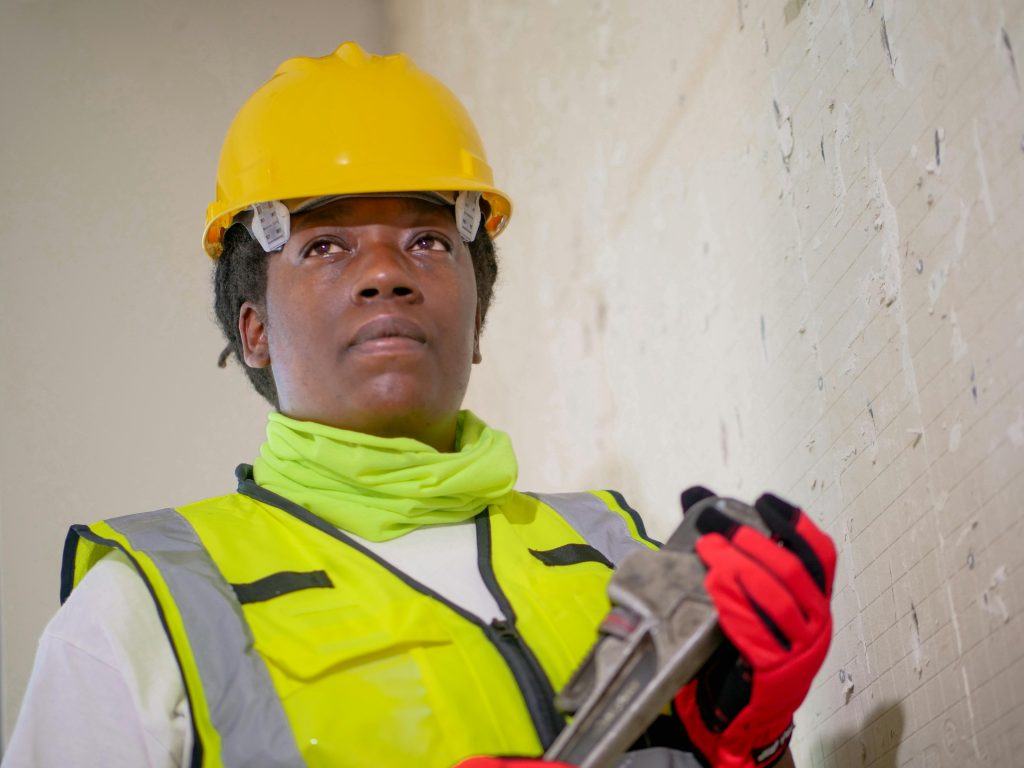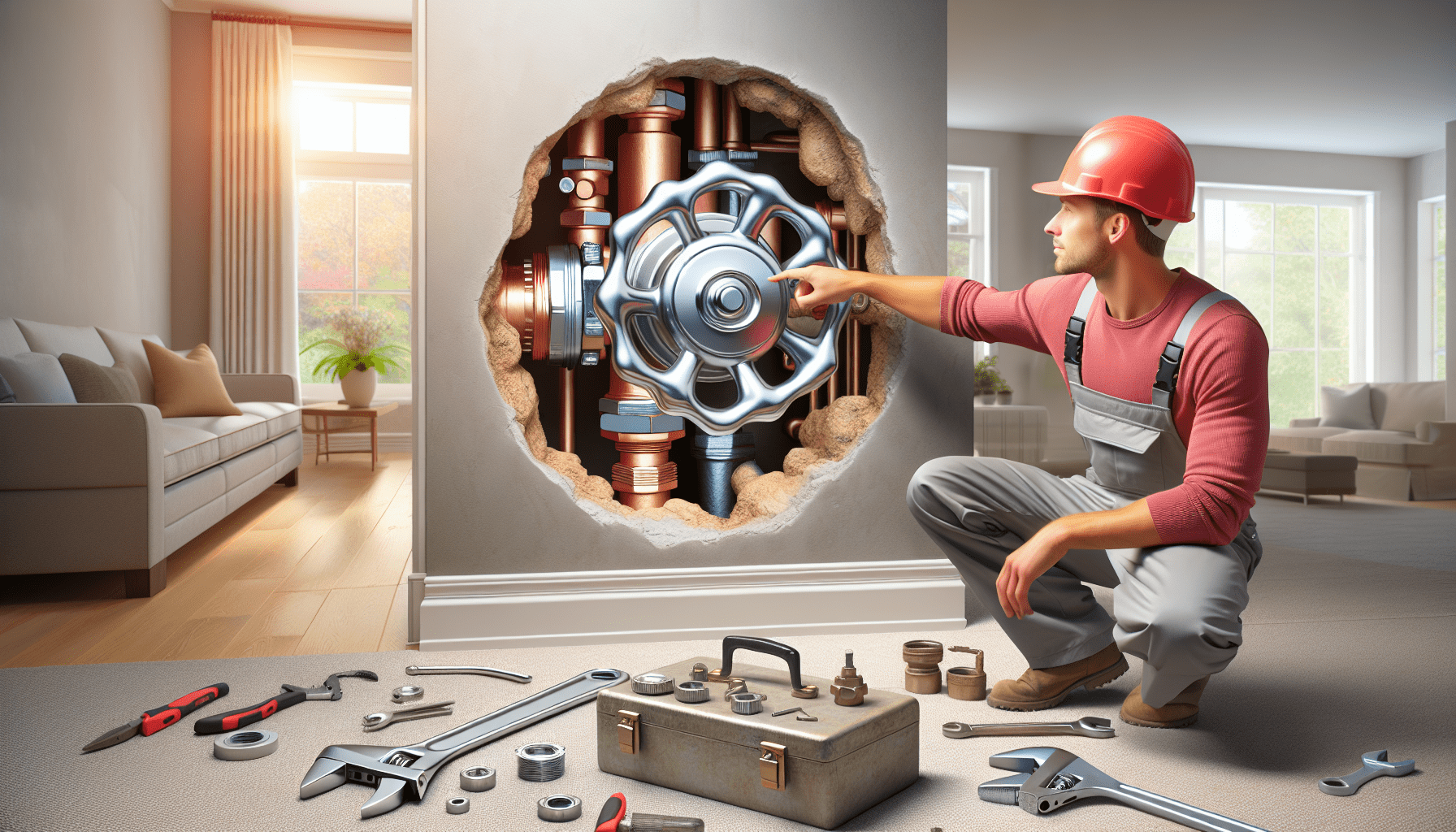In this video, titled “Where is the Main Water Shut-Off Valve Located? Let a Plumber Guide You,” we meet Jordan, the son of Jim Grumpy Plumber. Jordan introduces his father, who has been a plumber for an impressive 48 years and saved them thousands of dollars with his expertise. Jim started this YouTube channel to share plumbing advice and help people out. He is a certified master plumber in Michigan and a c36 Plumbing contractor in California. In the video, Jim explains that the main water shut-off valve is usually located in the basement or right outside the house, with some variations depending on the climate. He emphasizes the importance of knowing where this valve is, as it can save you in emergency situations or when repairs are needed. Jim goes over the difference between gate valves and ball valves and the importance of keeping the valve clean and in good working condition. He concludes by offering tips on locating the shut-off valve based on your climate.

Where is the main water shut-off valve located?
Introduction to the topic
When it comes to owning a home or a condo, it’s important to know the location of the main water shut-off valve. In case of emergencies or repairs, being able to quickly and easily access this valve can save you a lot of time, money, and potential damage to your property. In this article, we’ll explore the different locations of the shut-off valve and explain why it’s crucial to know where it is.
Importance of knowing the location of the shut-off valve
Knowing the location of the main water shut-off valve is essential for several reasons. Firstly, in emergency situations such as burst pipes or major leaks, being able to quickly shut off the water supply can help prevent further damage to your home or property. Secondly, regular maintenance and repairs may require shutting off the water, and knowing where the valve is located will make these tasks much easier and more efficient. Lastly, in the event that you are unable to shut off the valve yourself, knowing its location will allow you to direct a neighbor or emergency plumber to quickly and effectively shut off the water.
Location in warm climates
Check outside the house
In warm climates, the main water shut-off valve is typically located outside the house. Start by looking around the perimeter of your property, near where the water enters your home. Often, you will find a valve box or cover that houses the shut-off valve. If there is no visible box or cover, you may need to do some digging or ask a professional plumber for assistance.
Look for the water meter
Another way to locate the shut-off valve is by finding the water meter. The water meter is usually located outside the house, near the street. Follow the water meter line from the street to your house, and you should find the shut-off valve close by. It’s important to note that this method may not be suitable for all properties, as some may have alternative plumbing setups.
Trace the water meter to find the shut-off valve
Once you’ve found the water meter, tracing the line from the meter to your house should lead you to the shut-off valve. This valve is typically located near the point where the water line enters your home. It may be underground, inside a valve box, or easily accessible on the side of your house. Regular maintenance of the valve and the surrounding area is crucial to ensure it is in proper working condition when needed.
Types of valves
Gate valves vs ball valves
In the past, gate valves were commonly used as shut-off valves. However, nowadays, ball valves have become the preferred option. Gate valves require regular exercise, meaning they need to be opened and closed periodically to prevent them from becoming stuck or difficult to use. On the other hand, ball valves only require a simple quarter turn to shut off the water flow. They are easy to operate and less prone to failure.
Advantages of ball valves
Ball valves offer several advantages over gate valves. Firstly, their simple design makes them more reliable and less likely to leak or break. Secondly, the quarter-turn operation makes them quick and easy to use, especially in emergency situations. Additionally, ball valves are less prone to corrosion and can withstand high water pressure. Overall, investing in a ball valve for your main water shut-off is a wise choice that will save you time and headaches in the long run.
Maintaining the shut-off valve
Regular exercise of the valve
Regardless of the type of valve you have, it is important to regularly exercise it. This means fully opening and closing the valve at least once every few months to keep it in proper working condition. Exercise helps prevent the valve from becoming stuck or difficult to operate when you need to shut off the water. It is a simple task that can save you from potential difficulties in the future.
Cleaning out the valve box
If your shut-off valve is installed in a valve box, it’s important to keep the box clean and free from debris. Over time, dirt, leaves, and other materials can accumulate in the box, making it difficult to access and operate the valve. Regularly check the valve box and clean out any debris to ensure that the valve remains easily accessible and usable at all times.

Location in cold climates
Placing the shut-off valve in the basement
In cold climates, the main water shut-off valve is typically located in the basement. This is to protect it from freezing temperatures that can occur during winter. If you have a basement, chances are the shut-off valve will be located there, usually near the point where the water line enters your home. It is important to ensure that the valve is easily accessible and not obstructed by any objects or clutter.
Co-locating with well tanks if applicable
In some cases, homes in cold climates may have well tanks in addition to a main water shut-off valve. If you have a well system, these tanks are typically located in the basement. It is common for the shut-off valve to be located near the well tanks, as they are all part of the same water supply system. Familiarize yourself with the layout of your basement to ensure you can easily locate the shut-off valve if needed.
Importance of knowing the location
Emergency situations
In emergency situations such as burst pipes or major leaks, being able to quickly shut off the water supply can help minimize damage and prevent further issues. Knowing the location of the main water shut-off valve allows you to take immediate action and minimize potential damage to your property. It can save you time, money, and stress in the event of a plumbing emergency.
Neighbor assistance
If you are unable to shut off the water yourself or if you are away from home during an emergency, knowing the location of the shut-off valve can help you guide a neighbor or friend who may be able to assist you. By providing clear instructions on where to find the shut-off valve, you can ensure that someone can quickly and effectively shut off the water until you are able to address the issue personally.

Conclusion
Knowing the location of the main water shut-off valve is crucial for every homeowner or condo owner. Whether you live in a warm climate where the valve is typically located outside the house, or in a cold climate where it is often in the basement, familiarizing yourself with its location can save you time, money, and stress. Regularly exercising the valve and keeping the surrounding area clean are important maintenance tasks that will ensure the valve is readily accessible and in proper working condition when needed. Remember, it is always better to be prepared and knowledgeable about essential systems in your home. Stay informed and be ready to handle any plumbing emergencies that may arise.
Final thoughts from The Grumpy Plumber
As a master plumber with over 40 years of experience, I cannot stress enough the importance of finding and knowing the location of the main water shut-off valve in your home. Trust me, at some point, you will need it. Whether it’s an emergency or a maintenance task, being able to quickly and confidently shut off the water supply can make all the difference. Don’t wait until it’s too late. Take the time to locate and familiarize yourself with the shut-off valve in your home. It’s a simple task that can save you from potential disasters. Stay safe and prepared!

